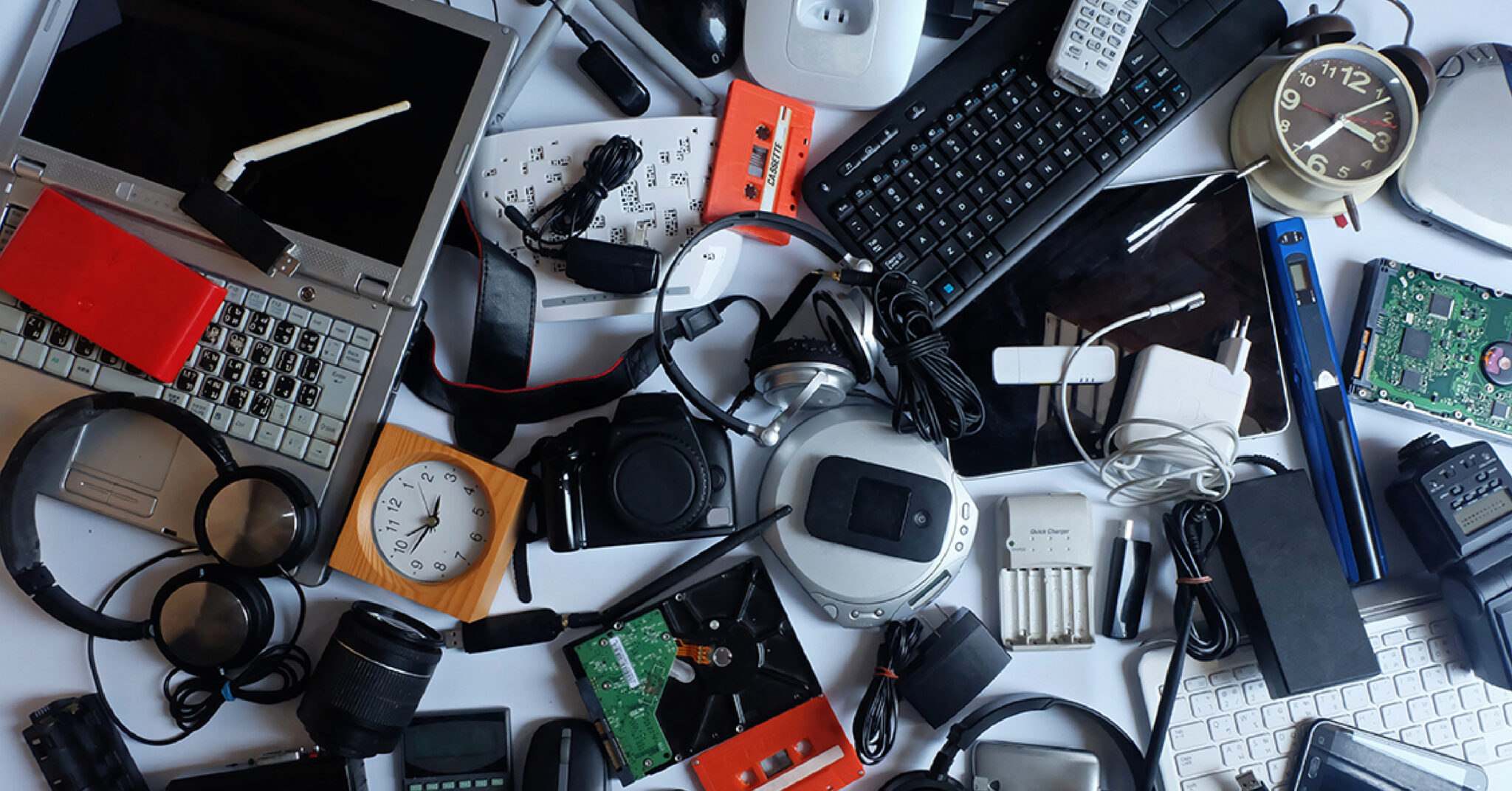When you work in an innovative sector, you talk a lot about producing things. Lavergne creates recycled plastic resins that electronics industry leaders then use to make more sustainable products. It’s about making the world cleaner and our shared future brighter through technology, recycled materials and better business processes.
While building is important, let’s not forget about the other end of the product’s lifecycle — disposing or breaking down. At the end of the product’s useful life, it’s important to responsibly divert those used devices away from landfill and into recycling.
After all, a Closed Loop process is truly a cycle. While one part of the process builds the product, another part is busy breaking it down and preparing the material for its new life. In Lavergne’s case, products made with plastic parts are created, recycled, then created again.
E-Waste is Growing Fast
Electronic waste or “e-waste” is the fastest-growing waste stream in the world. In 2018 alone, old smartphones, laptops, computer mice and printers produced a shocking 48.5 million tonnes of e-waste around the world.
October 2020 is International E-Waste Month. This month we’re turning our attention to the ways we can make help divert old electronic products away from the landfill and into recycling programs.
Everyone Has a Role
The global e-waste problem needs a multi-pronged solution. Everyone has a role — from plastics recycler to product manufacturers, consumers and governments.
Let’s have a look.
Plastics recyclers driving innovation
The plastic recycling industry can be a real leader on tackling the e-waste problem. Plastic recyclers can conduct research and development (R&D), build partnerships and create flexible solutions. As the technologies become more widespread and effective, it becomes easier and more available to build products with recycled materials.
At Lavergne, we do more than just recycle plastics to create new resins. Our commitment is to lead research projects to advance the industry’s learnings and insights.
Product manufacturers using recycled materials for innovative products
Product manufacturers can increasingly use those innovative plastic resins in their electronic consumer products such as smartphones, laptops, computer mice and printers.
In some cases, like HP ink cartridges, that industry leader has built a widespread return and recycling program so its used ink cartridges can be returned, recycled and then the recycled plastic from the ink cartridges and other sources such as plastic bottles and ocean-bound plastic can be used as raw material in the manufacturing of new HP ink cartridges.
Consumers making wise choices
Consumers can use their big purchases such as cars, appliances and consumer electronics to support companies using recycled materials and sustainable business practices such as using recycled materials. For example, consumers can look for eco-labels like the US Electronic Product Environmental Assessment Tool (EPEAT). EPEAT is an eco-label for the IT sector that scores products on important business practices such as sourcing preferable materials, using energy efficiently, running a Corporate Social Responsibility (CSR) program.
Governments promoting recycling policies
Governments can launch and manage responsible policies and programs. The Canadian Council of Ministers of the Environment (CCME) launched the Canada-Wide Strategy on Zero Plastic Waste in 2018. As part of this initiative, Canada’s government will collaborate with the provinces and territories to improve and expand extended producer responsibility through consistent, comprehensive and transparent policies for plastics.
A Great News Story
How many times have you heard, “We have good news and bad news”? On this story, there’s good news and great news. The good news is that our industry, working collaboratively amongst producers, consumers and governments, has a plan to reduce e-waste and turn old plastics into new plastic resins.
The great news is those multi-pronged efforts have already started producing widespread benefits. They include:
- Greater collaboration among leading companies
- Growing prosperity for families and communities in other countries
- Development of new and useful technologies
- Promoting best practices for sustainability
- Greater environmental health and cleaner oceans
The most groundbreaking innovation is moving the entire electronics sector closer to “Infinite Recycling” — a pure Closed Loop — where products made with recycled plastics will be properly disposed of so they’ll live again as new plastics and new electronics products. At Lavergne, we’re not only recycling — we’re continually developing new ways to make plastics using old plastics.
Follow Lavergne’s Newsroom
Follow the Lavergne newsroom for more updates on recycled plastics and sustainable business practices.


